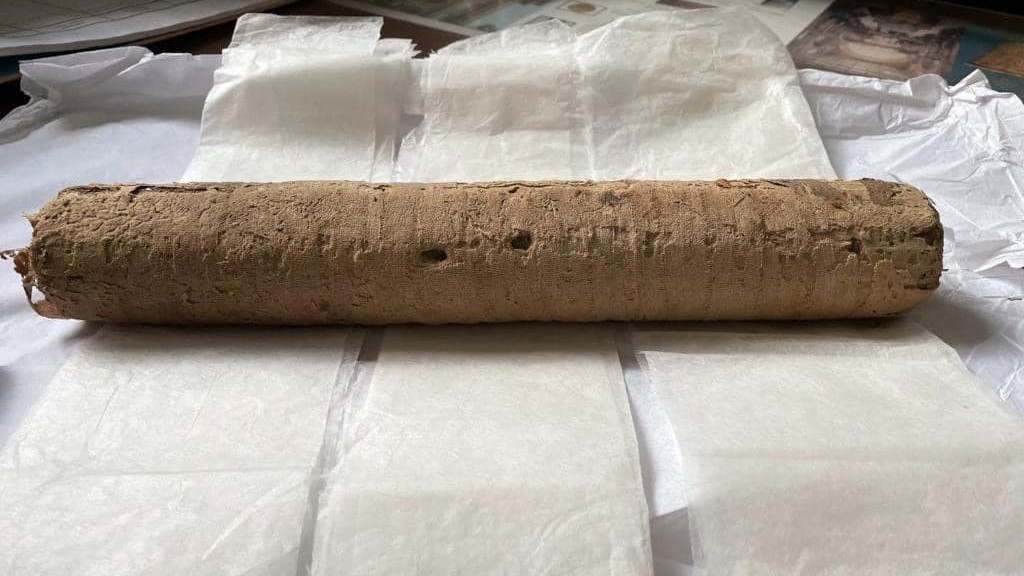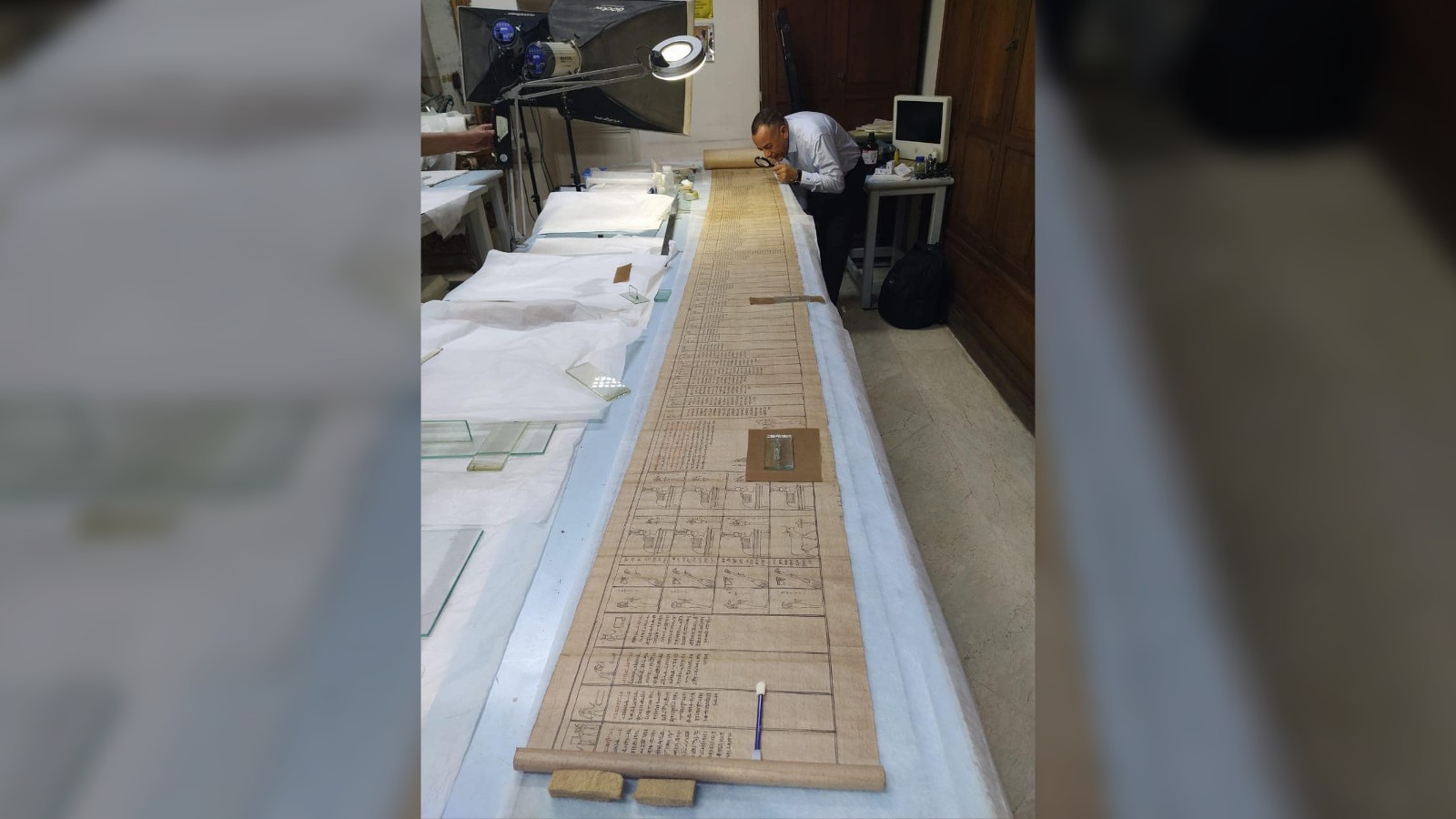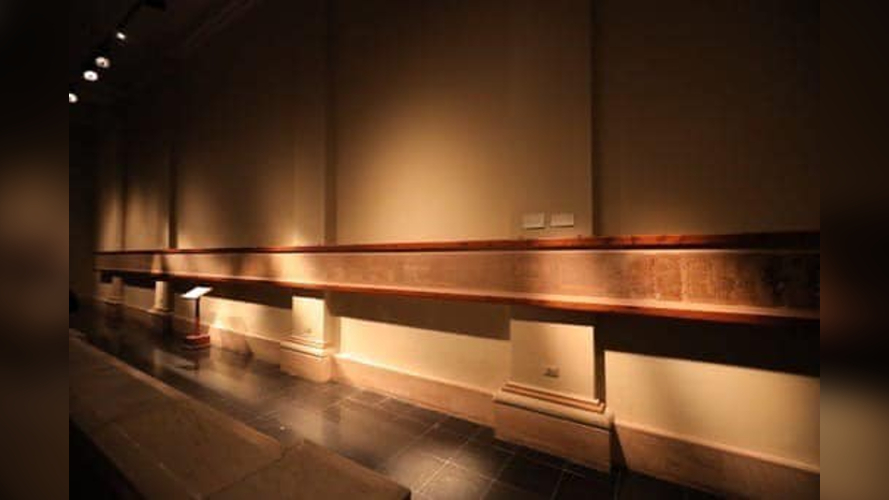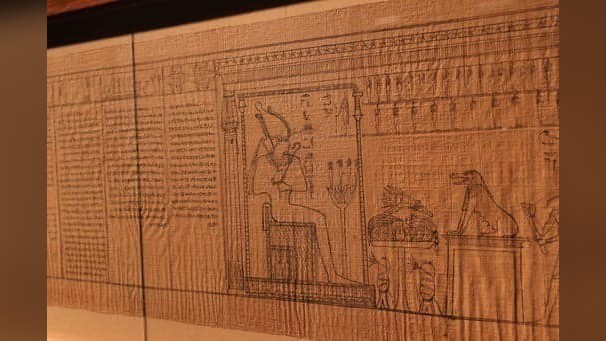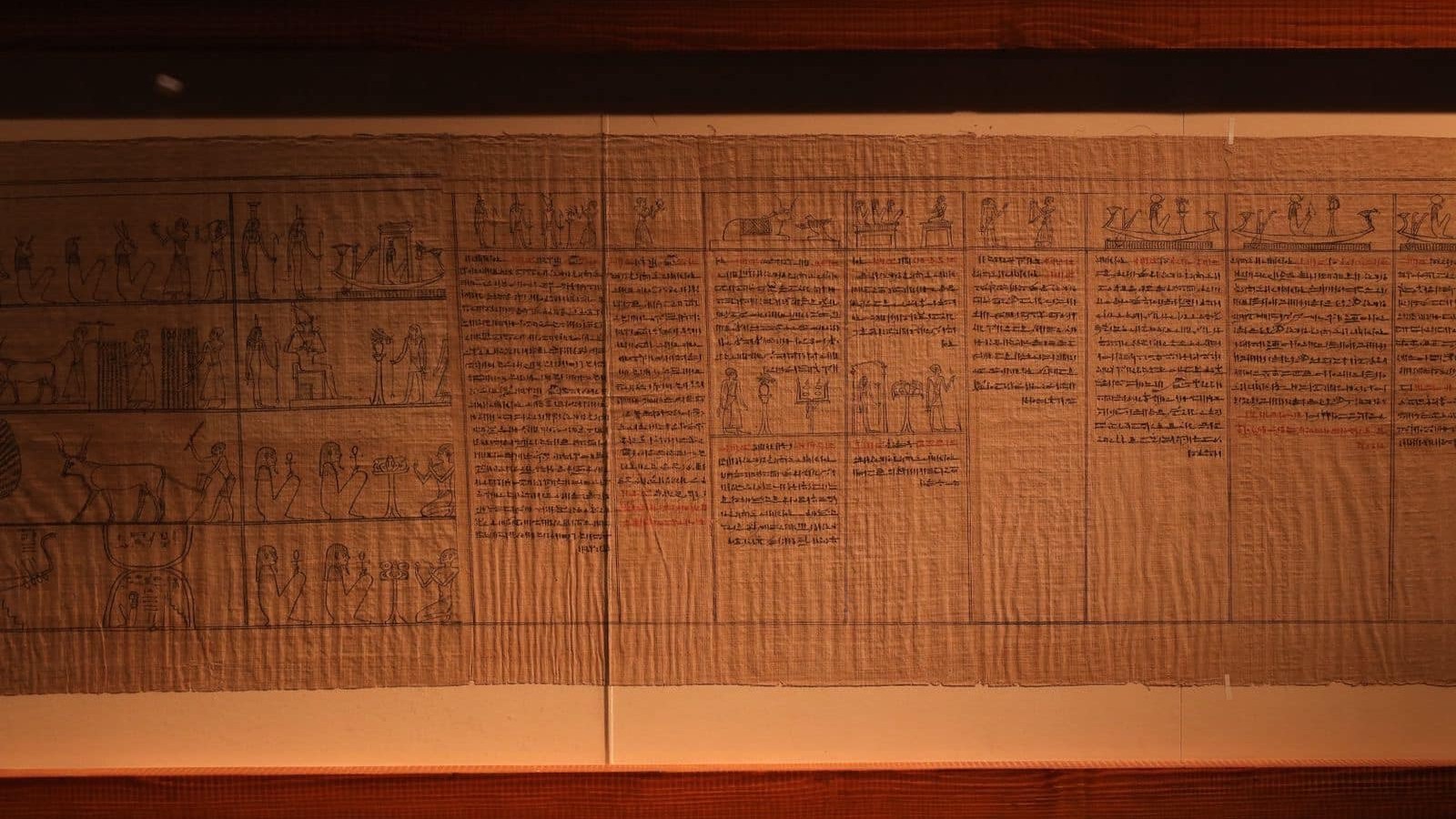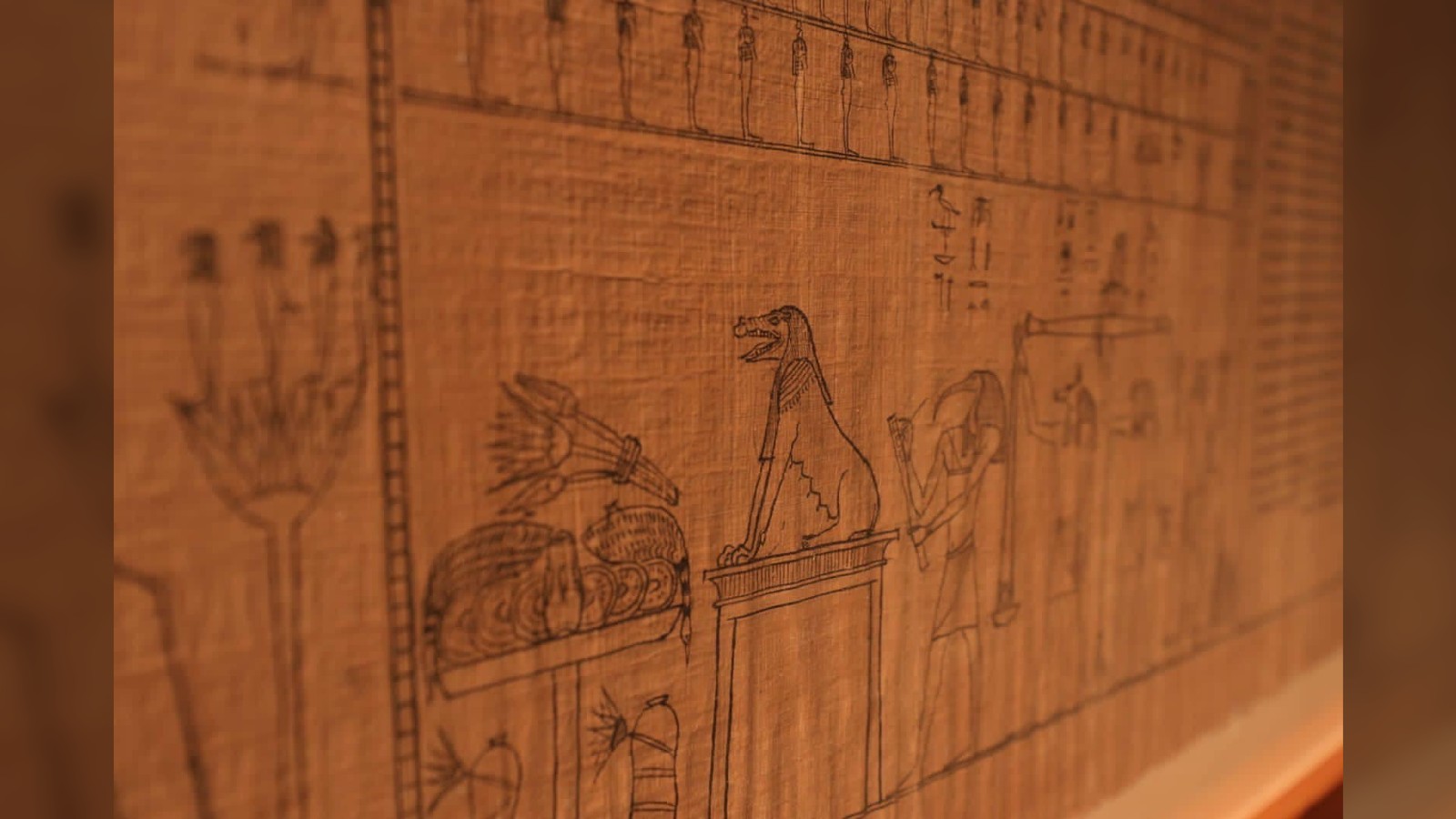See photos of stunningly preserved 52-foot-long Book of the Dead papyrus from ancient Egypt
Egypt has released photos of a newly discovered Book of the Dead from more than 2,000 years ago.

Egyptian officials have released photos of an ancient scroll, the 52-foot-long (16 meters) Book of the Dead papyrus recently discovered in Saqqara. The 10 images show ancient illustrations of gods and scenes from the afterlife, as well as text on the document, which is more than 2,000 years old.
Archaeologists discovered the Book of the Dead papyrus within a coffin in a tomb near the Step Pyramid of Djoser and announced the discovery on Jan. 14 for Egyptian Archaeologists Day, but this is the first time they've released images of the scroll to the public.
It was not unusual for ancient Egyptians to bury the Book of the Dead with the deceased, but they didn't call it that at the time. Rather, modern archaeologists coined the term "Book of the Dead" to refer to a collection of texts that ancient Egyptians thought would help guide the dead in the afterlife.
Here are the 10 newly published photos, which the Egyptian Ministry of Tourism and Antiquities published on its Facebook page.
1. Papyrus for the dead
The 52-foot-long scroll was found at Saqqara in May 2022. It contains chapters from the Book of the Dead. It was recently restored and translated into Arabic and is now on display at The Egyptian Museum in Cairo. The text is written in hieratic, a script derived from hieroglyphs.
2. All rolled up
The papyrus was found rolled up in a coffin belonging to a man named Ahmose (not to be confused with a pharaoh who lived in earlier times). The man's name is mentioned in the papyrus about 260 times, the researchers said. He lived around 300 B.C., near the beginning of the Ptolemaic dynasty, a dynasty of pharaohs descended from one of Alexander the Great's generals.
3. Carefully unrolled
A team of researchers performed extensive conservation work so they could unroll the papyrus. Ahmose's tomb is located south of the step pyramid, built for Djoser, a pharaoh from the third dynasty who ruled from about 2630 B.C. to 2611 B.C. While this pyramid was built long before the time of Ahmose, it wasn't unusual to find Ahmose's tomb there, as people in ancient Egypt sometimes liked to be buried near the pyramids of long dead pharaohs.
Get the world’s most fascinating discoveries delivered straight to your inbox.
4. Analyzing the scroll
The unrolled papyrus is seen here. It was written in black and red ink, and the quality of the writing indicates that it was written by a professional, researchers said. Despite the size of the scroll, there are longer Book of the Dead texts known from Egypt. For instance, a Book of the Dead papyrus, which is now in the British Museum, was originally 121 feet (37 m) long.
5. Book of the Dead on display
This photo shows the unrolled papyrus on display at The Egyptian Museum in Cairo.
6. Ancient illustrations
This Book of the Dead text also contains illustrations. This image appears to show Osiris, the ancient Egyptian god of the underworld. In Egyptian mythology, Osiris' life was ritually restored after he died — something that ancient Egyptians hoped would happen to them in the afterlife.
7. The deity Osiris
This image shows more details about Osiris. He is shown sitting on a throne while wearing an "Atef" crown, a type of crown often gracing the head of Osiris. There appear to be offerings before him, as well as a creature who may be Ammit, a deity who consumed anyone who was not worthy of being ritually restored in the afterlife.
8. Husband and wife
This image appears to depict offerings and a scene of a couple venerating Egyptian deities. This couple may be Ahmose and his wife (whose name is not known). Not much is known of Ahmose, but he was wealthy enough to have an elaborate copy of the Book of the Dead made for him.
9. Leading the cow
A number of scenes are illustrated in this section of the Book of the Dead. At the far left, a cow appears to be led somewhere — perhaps to be given as an offering. A number of images depict boats, which could be used to navigate the underworld.
10. Weighing against a feather
This close-up shows a creature, possibly Ammit, sitting before Osiris. In ancient Egyptian mythology, the heart of the deceased is weighed against the feather of Maat, a god associated with truth, justice and order. If the person's bad deeds in life were great, their heart would be heavier than the feather, and Ammit would devour the deceased.

Owen Jarus is a regular contributor to Live Science who writes about archaeology and humans' past. He has also written for The Independent (UK), The Canadian Press (CP) and The Associated Press (AP), among others. Owen has a bachelor of arts degree from the University of Toronto and a journalism degree from Ryerson University.
 Live Science Plus
Live Science Plus






